Jonsbo N10 NAS Enclosure Review
The Jonsbo N10 is a purpose-built NAS enclosure tailored for Mini-ITX builds that prioritizes a compact footprint, flash-based storage, and low-power operation. Announced at Computex 2025, the N10 represents a significant design departure from Jonsbo’s earlier N5 chassis by reducing overall dimensions to just 205mm in width and depth, and 108mm in height. This change reflects a broader trend in DIY NAS building—especially among users deploying SSD-only arrays or compact motherboards with embedded CPUs—who value minimal space usage without sacrificing component access or build quality. The enclosure supports up to four 2.5-inch SATA SSDs or HDDs mounted along its internal base, along with a FLEX 1U power supply (up to 150mm) and a low-profile CPU cooler not exceeding 38mm in height. Constructed from thick 3.3mm aluminum alloy panels and a 1.0mm steel interior frame, it offers durability alongside a neutral, industrial aesthetic that blends well in home and office environments. Given the increasing popularity of MITX NAS boards from brands like Topton and CWWK, which often include soldered CPUs and compact layouts, the Jonsbo N10 enters the market as a focused option for builders who need efficient thermal performance, portability, and enough internal expansion to support a hybrid SSD/M.2 architecture in a space-conscious package.
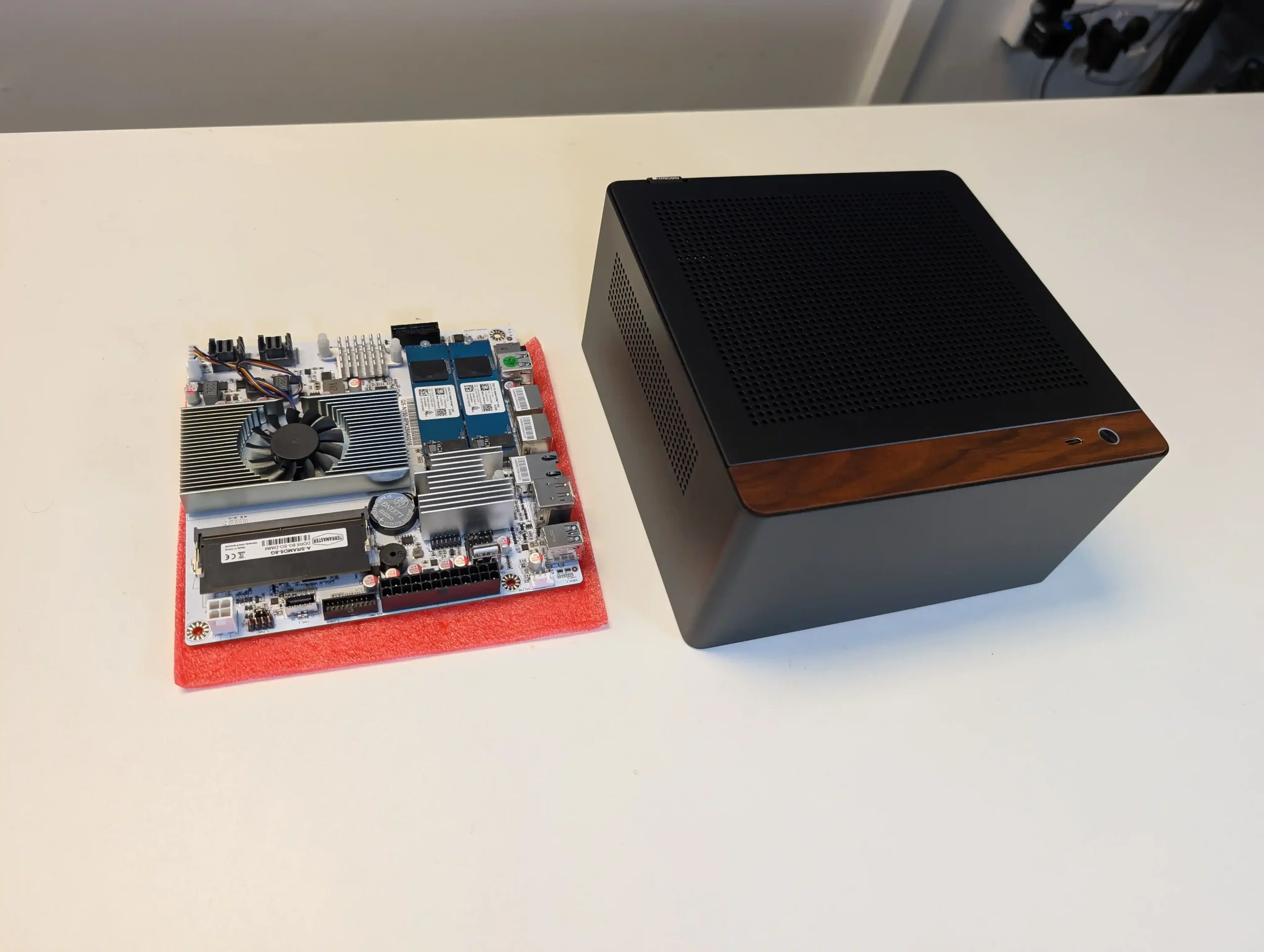
Jonsbo N10 NAS Enclosure Review – Quick Conclusion
The Jonsbo N10 is a compact, purpose-built Mini-ITX NAS enclosure designed for users prioritizing SSD-based storage in a low-power, space-efficient build. With a footprint of just 205mm square and 108mm tall, it offers four 2.5-inch drive bays, FLEX PSU support, and a solid aluminum-steel construction that balances durability with minimalism. Its layout is well-suited for embedded CPU boards and hybrid storage configurations, but tight internal spacing, a 38mm CPU cooler height limit, and the lack of PCIe card support require careful component selection. While cooling is handled by two built-in 40mm fans and ventilation across multiple panels, airflow in the upper cavity remains passive and somewhat restricted—posing thermal challenges for high-performance CPUs or 10GbE NICs. Setup is straightforward, though users must manually route all SATA data and power cables, as no backplane is included. The inclusion of helpful accessories such as a Molex-to-SATA adapter and magnetic top panel adds value, and the minimalist I/O—with a single USB Type-C—reinforces its role as a headless NAS unit. Ultimately, the N10 is not a catch-all solution, but for users building SSD-centric NAS systems with efficient MITX boards, it offers a tightly focused and well-executed platform with a strong balance of features and size.
Where to Buy a Product





![]()
![]()

VISIT RETAILER ➤






![]()
![]()

VISIT RETAILER ➤






![]()
![]()

VISIT RETAILER ➤






![]()
![]()

VISIT RETAILER ➤
Note – You can see the comparison of the Jonsbo N2, N3, N4 and N5 in this article HERE
| Where to Buy? |
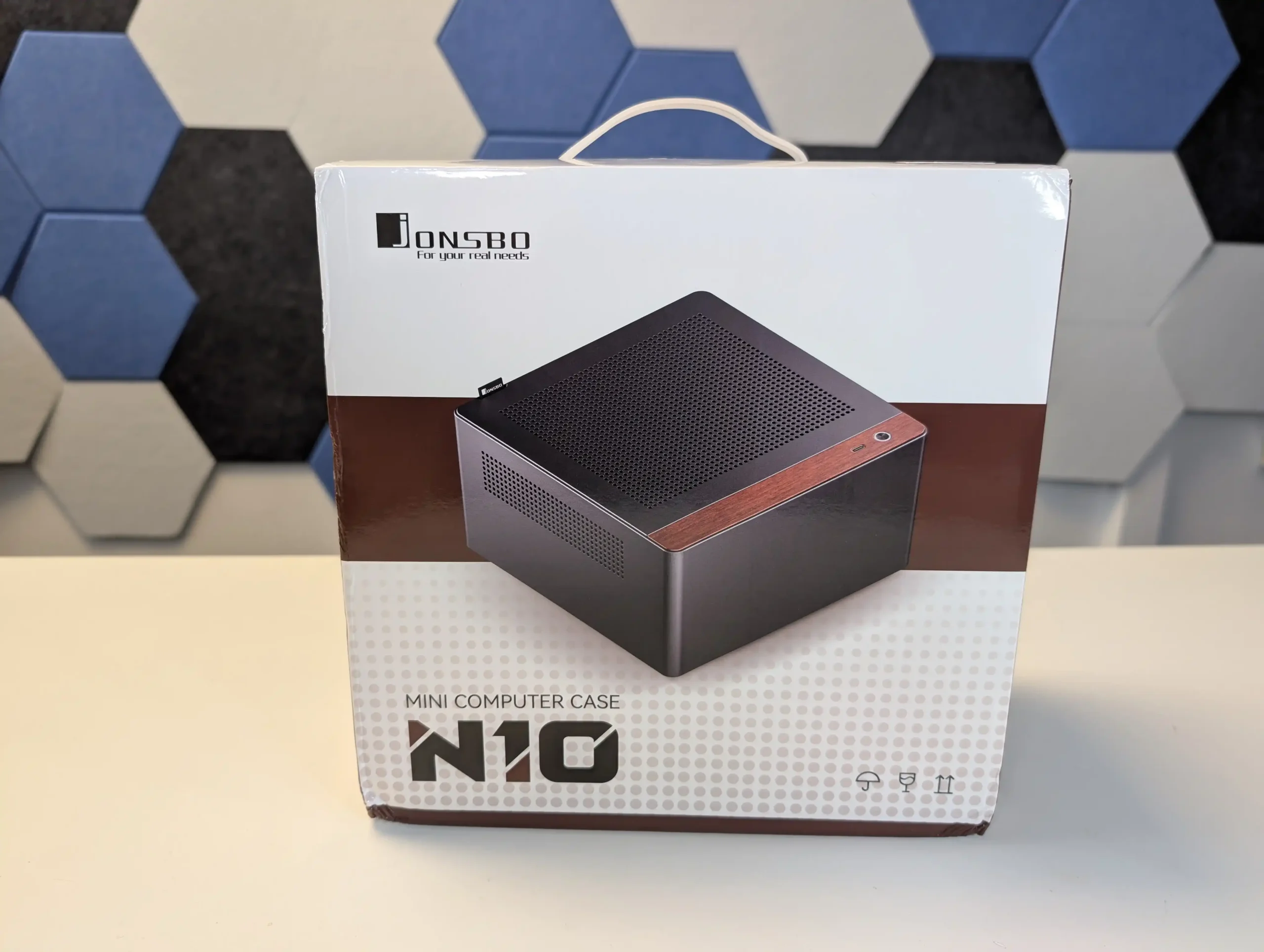
Jonsbo N10 NAS Enclosure Review – Case Design, Ventilation and Cooling
The exterior design of the Jonsbo N10 emphasizes minimalism and space efficiency. Measuring just 205mm wide, 205mm deep, and 108mm high, the case is almost a perfect cube in footprint, but with a shallow vertical profile that makes it easy to deploy on desks, shelves, or tight AV cabinets. The use of 1mm thick aluminum alloy on the outer panels not only provides a premium feel but also contributes to structural integrity without excessive weight.
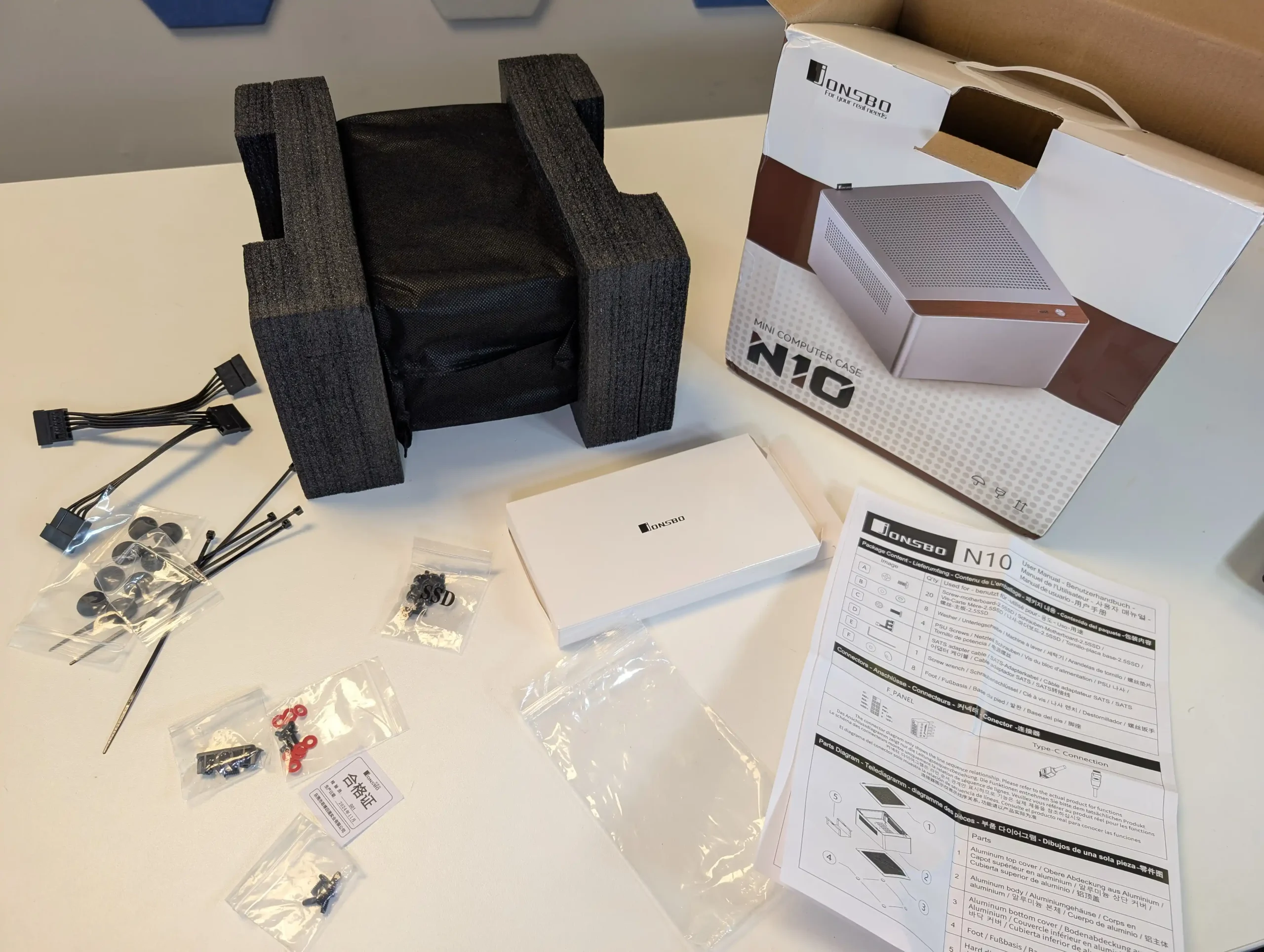
Combined with the internal steel chassis, the enclosure remains sturdy under load while keeping its overall weight to just 1.6kg. From a visual standpoint, the clean lines and brushed finish—available in black or silver—are devoid of branding or unnecessary ornamentation, which suits its role as a discrete server or quiet storage box in professional or home setups.
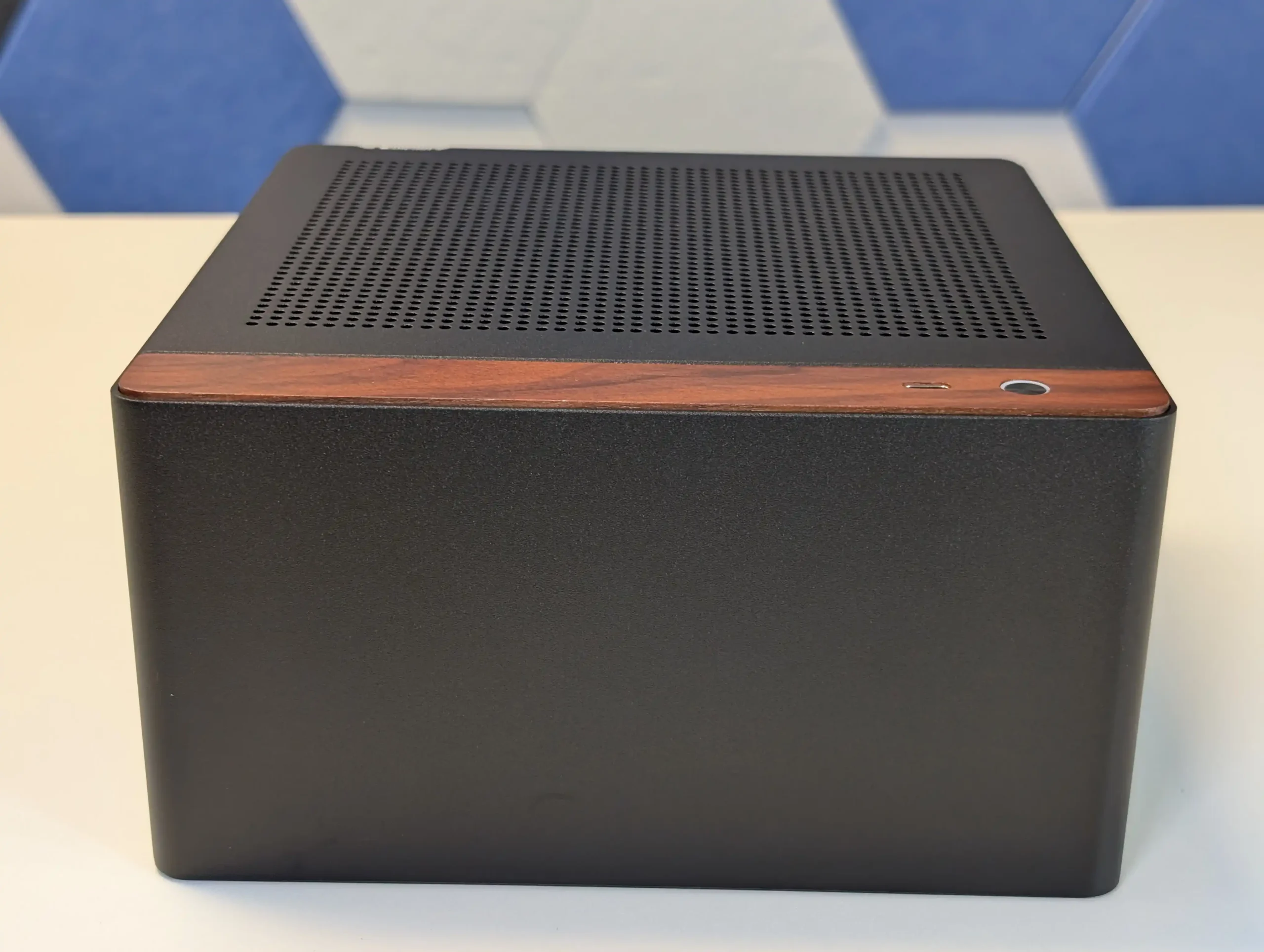
Ventilation is a core part of the external layout, with venting present on nearly every surface of the chassis. Perforations on the side panels, rear, and base allow for passive air movement across internal components, helping to reduce thermal buildup. While the compact size limits the scope of airflow paths, Jonsbo has attempted to compensate by ensuring that each major face includes some form of ventilation.
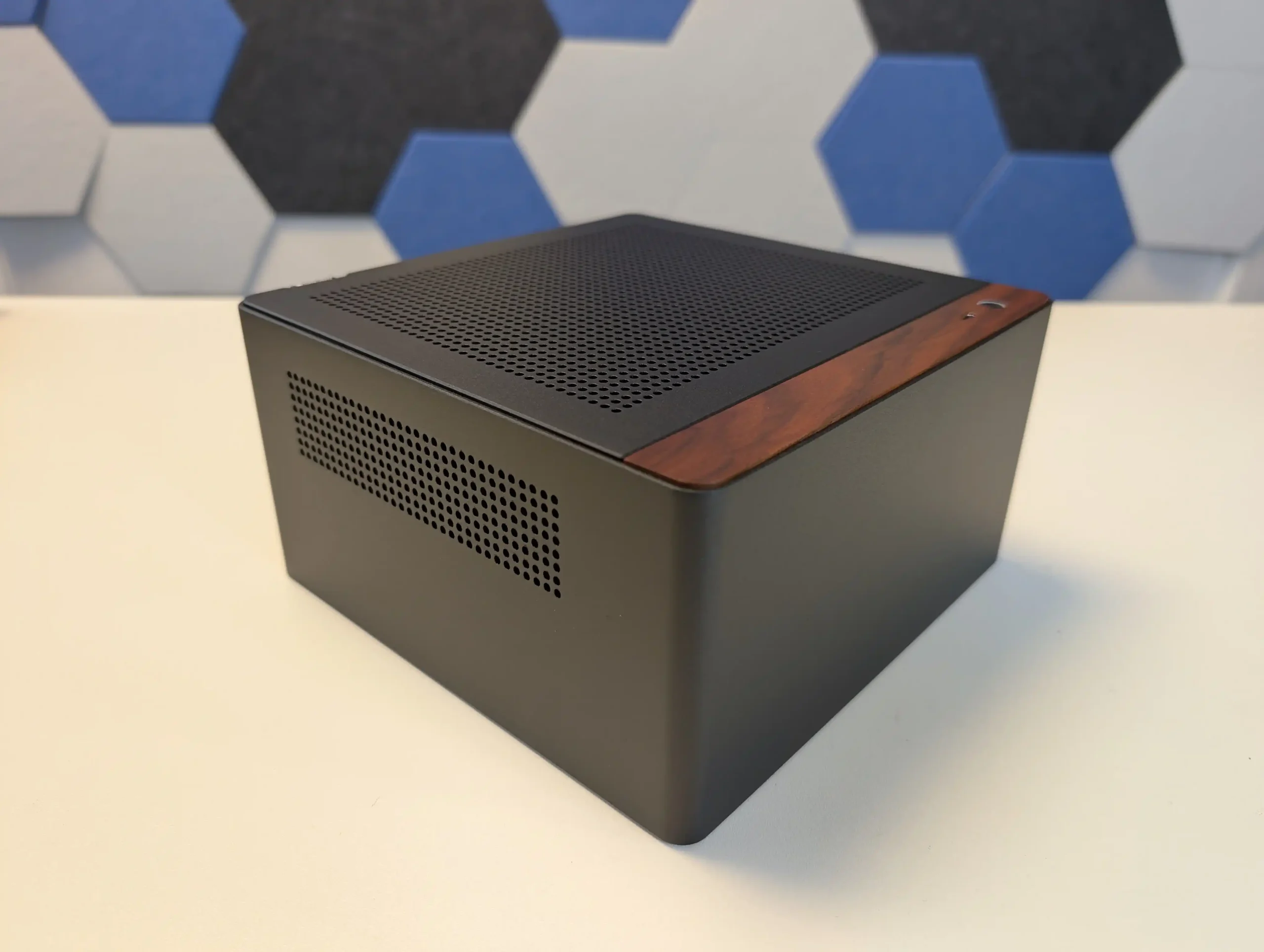
The top panel, held in place magnetically, can be removed easily for additional airflow during installation or servicing. However, this panel itself includes no fan mounts or perforations, which may limit vertical heat dissipation unless the lid is removed or modded.
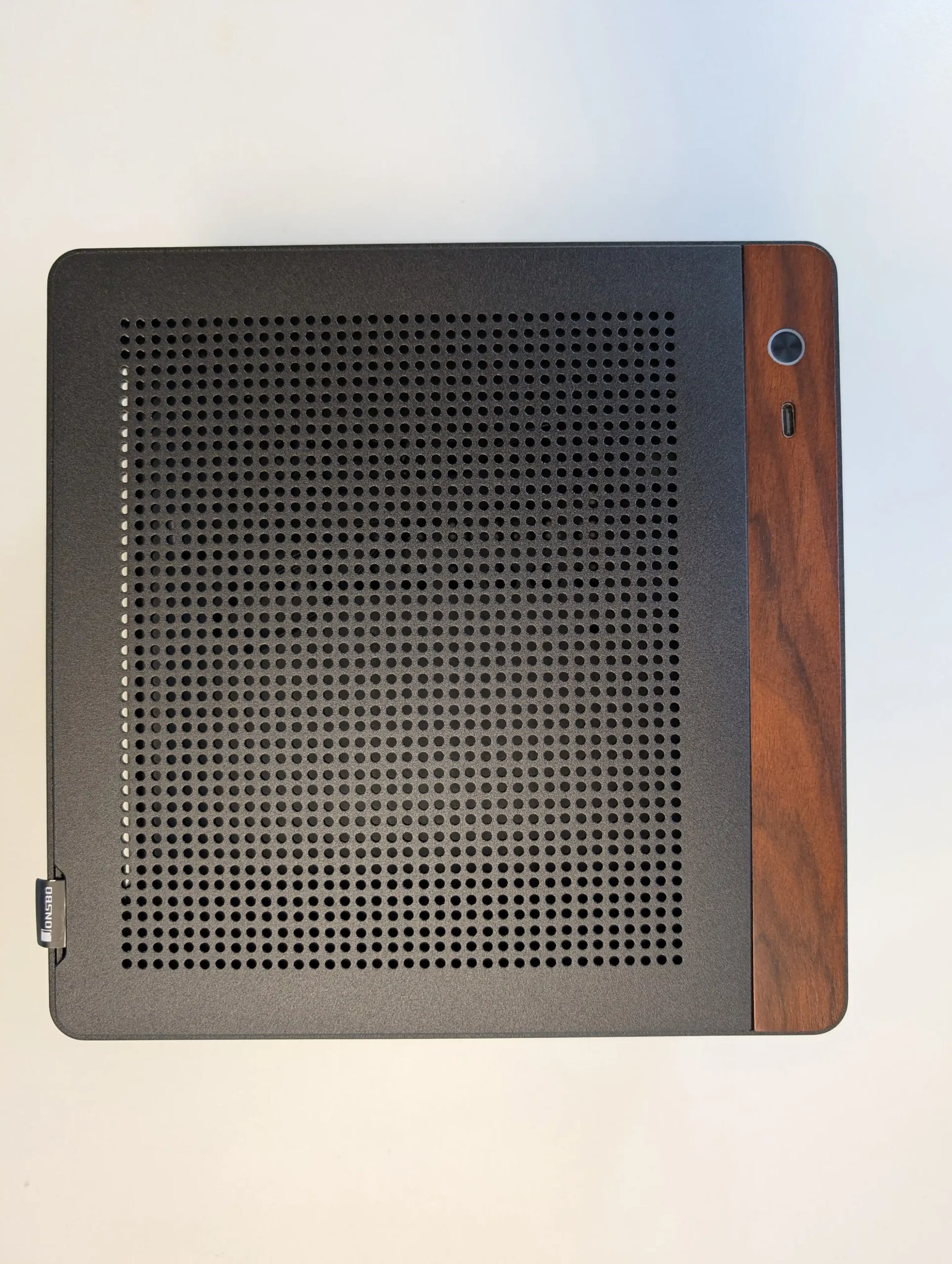
Cooling is primarily handled by two built-in 40mm x 20mm exhaust fans mounted on the rear panel, each rated at 5000 RPM. These fans are positioned to draw hot air away from the internal drive bay and motherboard area, effectively pulling air in through the side and base perforations and pushing it out the back.

While the fans are small, their high RPM ensures a reasonable volume of air is cycled through the chassis. During testing, this design produced moderate acoustic output—peaking at around 43-45 dBA at load when measured from the rear—and noise levels were generally acceptable for typical NAS operation, particularly with low-TDP motherboards and embedded CPUs.

That said, airflow through the top cavity of the enclosure is limited. While the base panel and lower chamber benefit from fan-assisted cooling directed over the SSDs and PSU, the upper portion—where the CPU cooler and any on-board NICs are located—relies entirely on passive convection.
 |
 |
 |
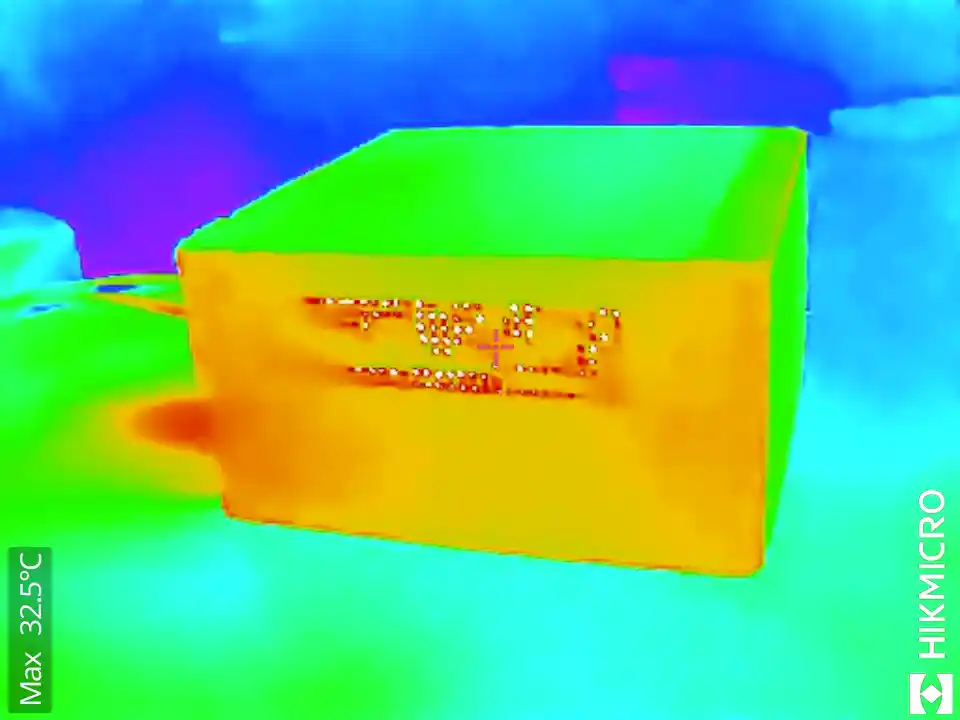 |
This can lead to hot air stagnation around components like 10GbE controllers or active M.2 heatsinks, particularly in long uptime scenarios. In your testing, surface temperatures on the top panel reached 31–33°C after 24 hours of deployment, with internals climbing higher toward 55–56°C, especially around passive heatsinks with limited surrounding airflow.
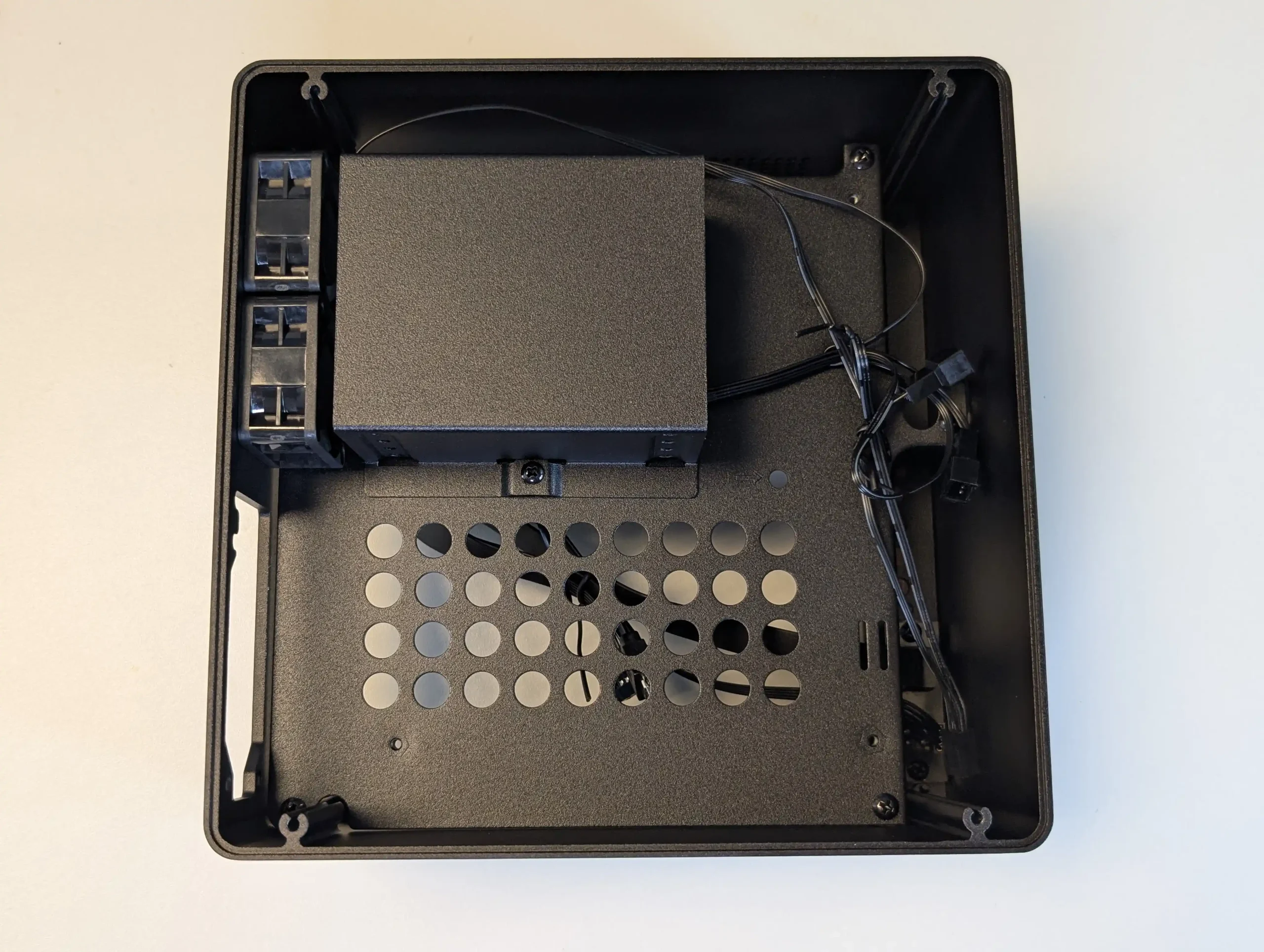
The absence of additional fan mounting options or top-mounted exhaust fans means users have little room to expand the cooling setup. While some users may consider modding the top panel to add extra fans or mesh inserts, the stock configuration offers no support for such upgrades.

This makes thermal planning crucial, especially for users deploying more powerful CPUs like Intel’s i5-1240P or using motherboards with multiple onboard NVMe drives and high-speed networking. For more passive deployments, like those with low-power N305 or N355 CPUs and minimal drive activity, the default setup should be sufficient—though tight airflow margins should always be considered during build planning.
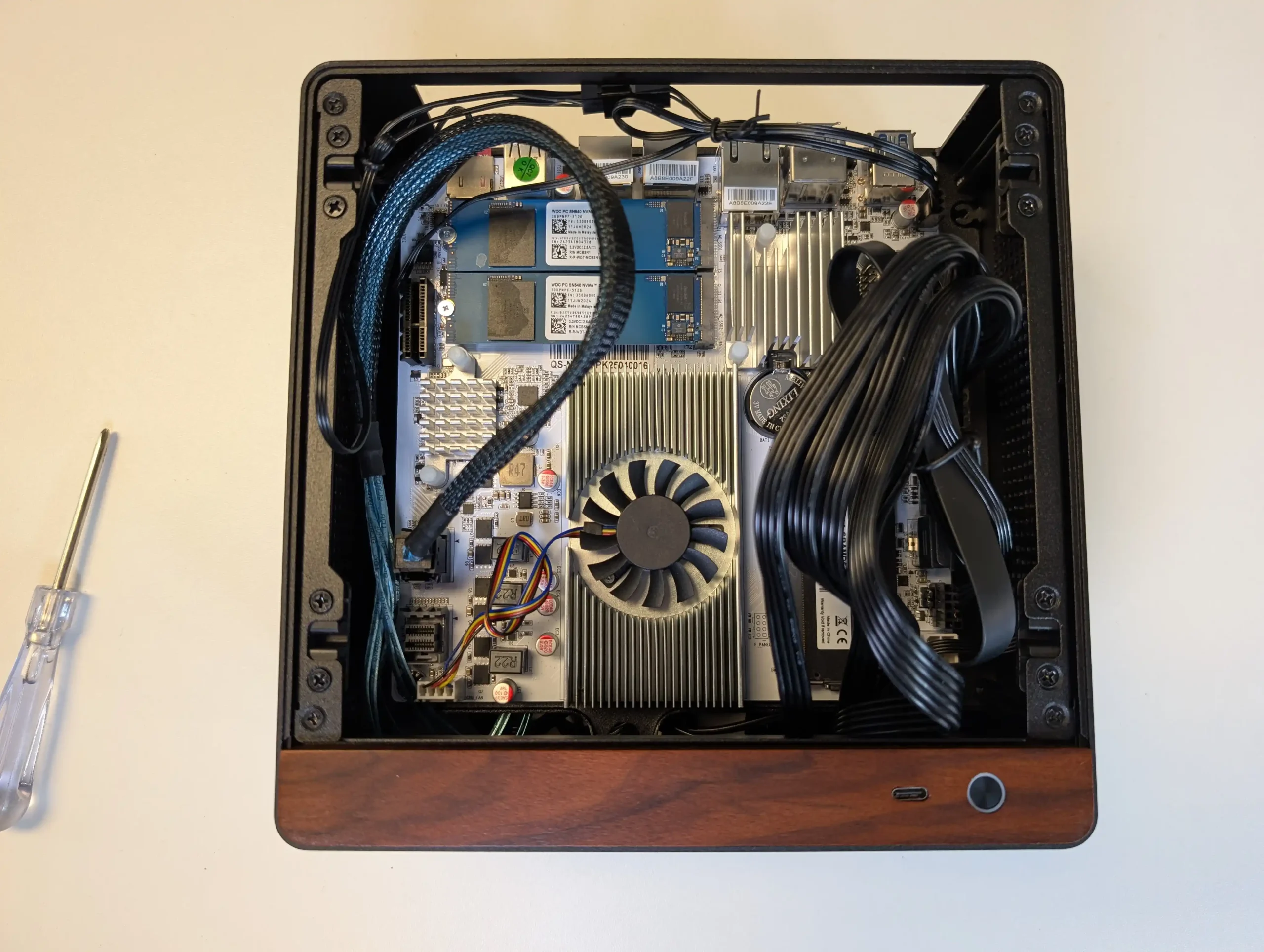
Jonsbo N10 NAS Enclosure Review – Internal Design
Internally, the Jonsbo N10 is laid out to support only the essentials, reflecting its role as a NAS-first chassis with limited internal expansion. The Mini-ITX motherboard tray sits centrally within the lower half of the enclosure, flanked on one side by the FLEX PSU bracket and on the other by the horizontal drive cage. Despite the symmetrical exterior, internal space is tightly constrained, and components must be carefully selected and installed in a deliberate sequence to avoid obstructing airflow or cabling paths.

The steel frame keeps the motherboard tray stable, but there’s little clearance between installed components, which becomes immediately apparent when routing power and SATA data cables across the system. Most of the case’s internal volume is claimed by either the drive cage or power supply, leaving minimal open airspace.

The four 2.5-inch drive bays are arranged in a single, fixed cage at the base of the unit. This cage does not feature any kind of backplane or hot-swap system—instead, users must manually screw each SSD into place using traditional mounting trays. Drives are accessed from the underside of the top panel after removing the magnetic lid, and their power/data cabling must be routed individually.
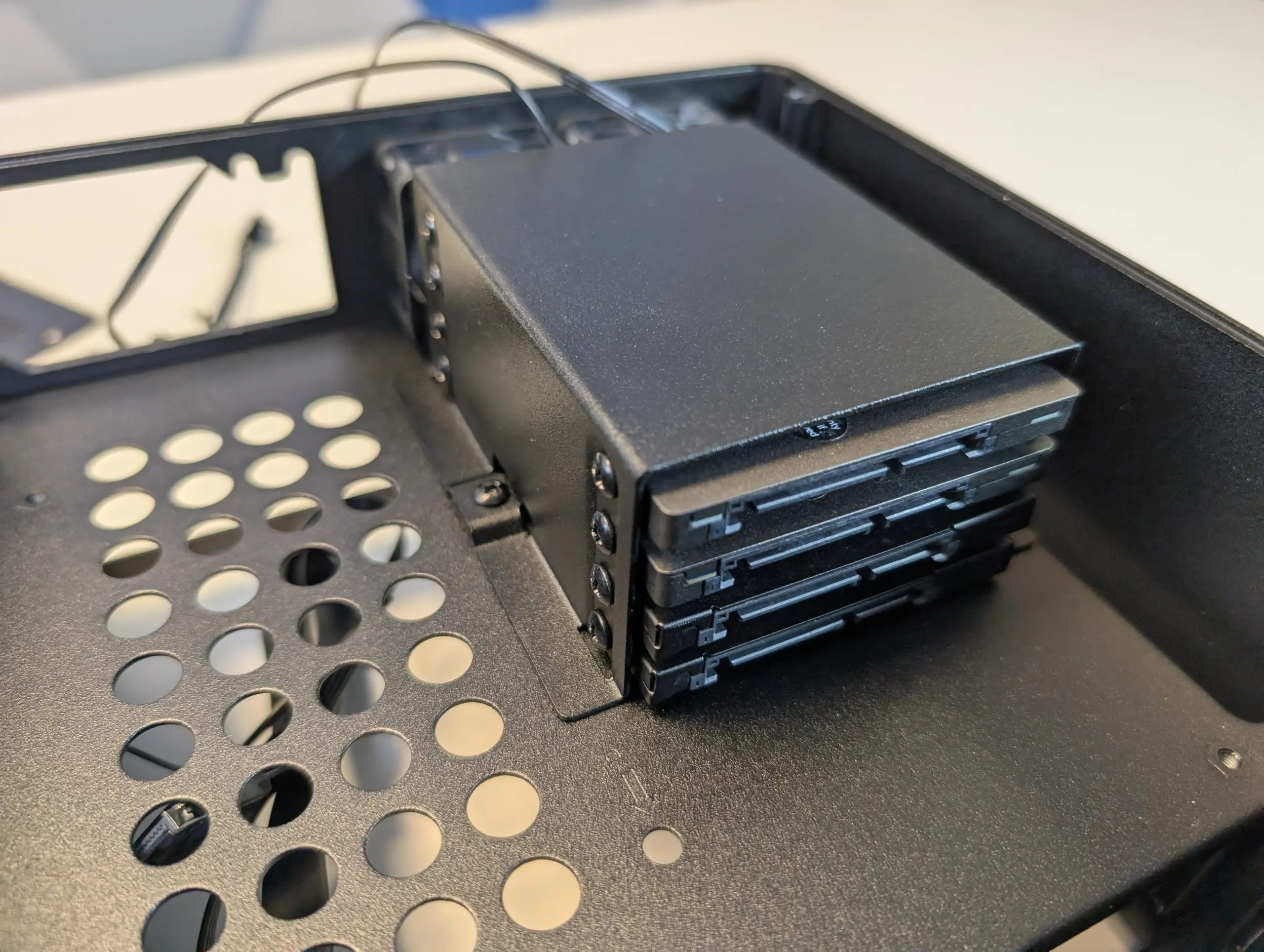
In small builds, this can quickly become a challenge. The case includes a Molex-to-SATA power adapter, which is a thoughtful addition for budget FLEX PSUs that lack four dedicated SATA power leads. However, data cable management remains the user’s responsibility. In builds using motherboards without breakout SATA connectors (such as SFF-8643 or SlimSAS), this results in a dense bundle of SATA leads running through an already cramped enclosure.

Clearance around the CPU socket is equally limited. The N10 supports CPU coolers up to 38mm in height, restricting users to ultra-low-profile models. This makes it well-suited for embedded CPU motherboards like the CWWK N150 or N355, which come with passive or ball-bearing heatsinks under 30mm.
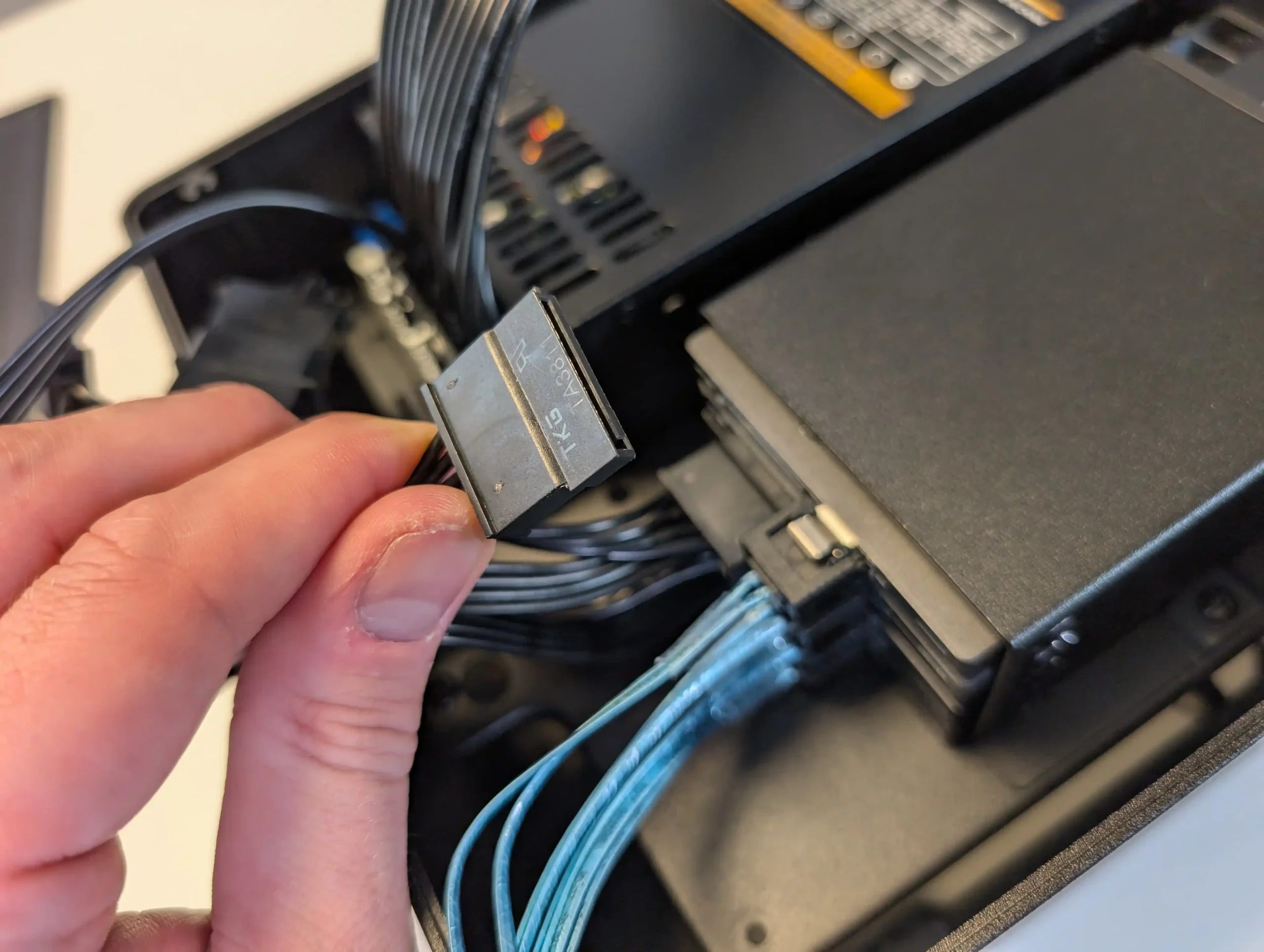
However, builders looking to use socketed CPUs like the i5-1240P will need to carefully select compatible coolers and be mindful of airflow choke points. There is no room for PCIe devices internally, and although some MITX boards have slots, they are effectively unusable due to chassis constraints. Any notion of using riser cards or external PCIe breakouts (such as M.2 to OCuLink) is largely impractical within this case’s physical limits.

| Component Support | Specification |
|---|---|
| Motherboard | Mini-ITX only |
| Drive Bays | 4 x 2.5-inch SSD/HDD (Screw-mounted, no backplane) |
| CPU Cooler Clearance | ≤ 38mm |
| PSU Support | 1U FLEX PSU (≤150mm length) |
| Expansion Slots | None usable (PCIe slots on motherboard not accessible) |
| Cabling Considerations | Manual SATA routing required, no bundled SATA data cables |
| Additional Features | Includes Molex-to-SATA power adapter, hex tool, and rubber feet |
Jonsbo N10 NAS Enclosure Review – Ports, PSU and Storage
Connectivity on the Jonsbo N10 is intentionally minimal. The front I/O panel includes a single USB Type-C port positioned on the top-right edge of the chassis, routed internally via a standard front-panel header. There are no additional USB-A ports, audio jacks, or buttons present, in keeping with the case’s clean exterior aesthetic.
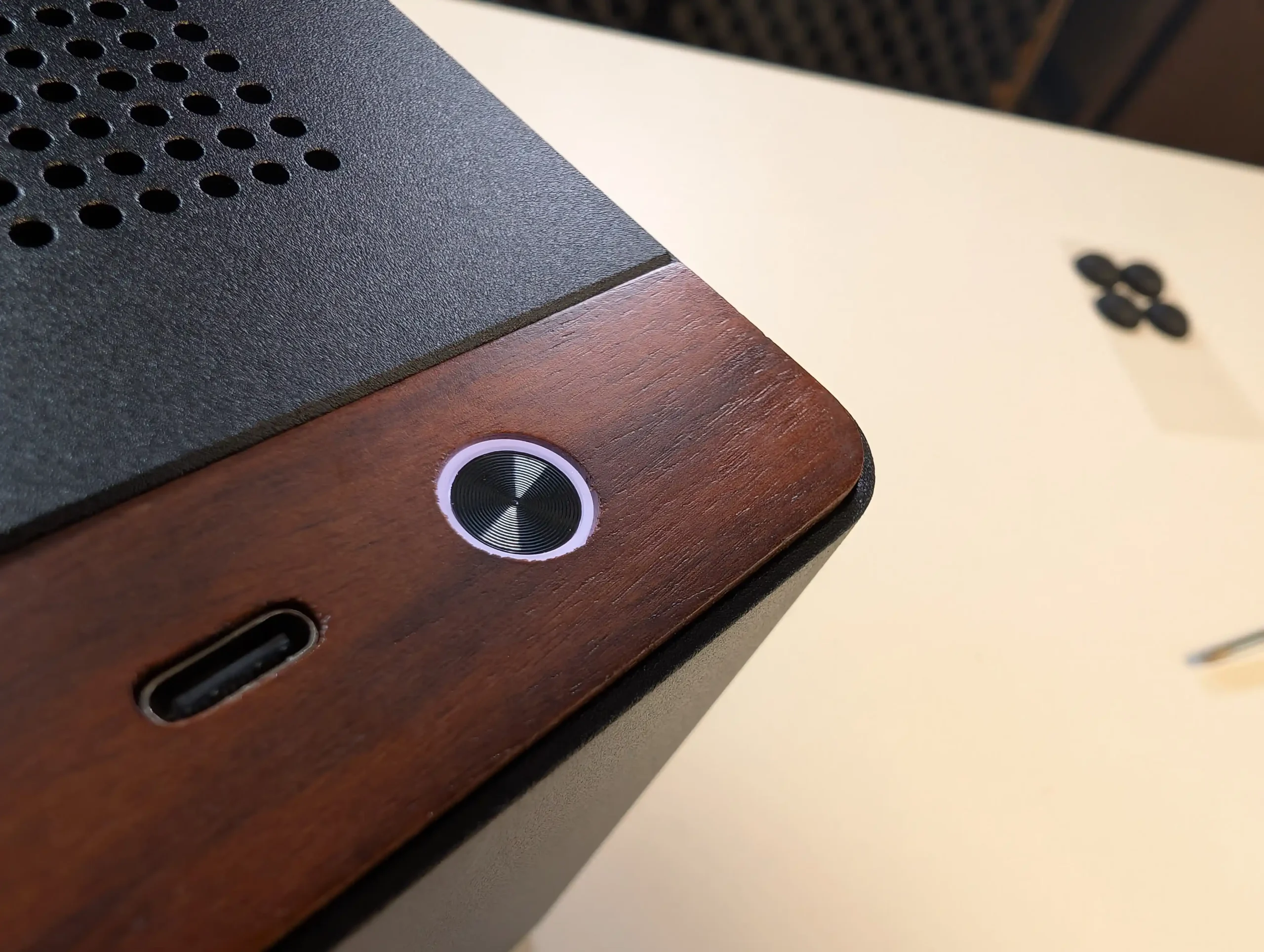
While this simplicity reinforces the N10’s focus as a headless or remote-managed NAS system, it does reduce options for users who might want to connect external drives, peripherals, or configure the system locally without reaching behind the unit. Builders relying on initial direct access may need to route peripheral cabling through the rear motherboard I/O or temporarily remove the top lid for setup.
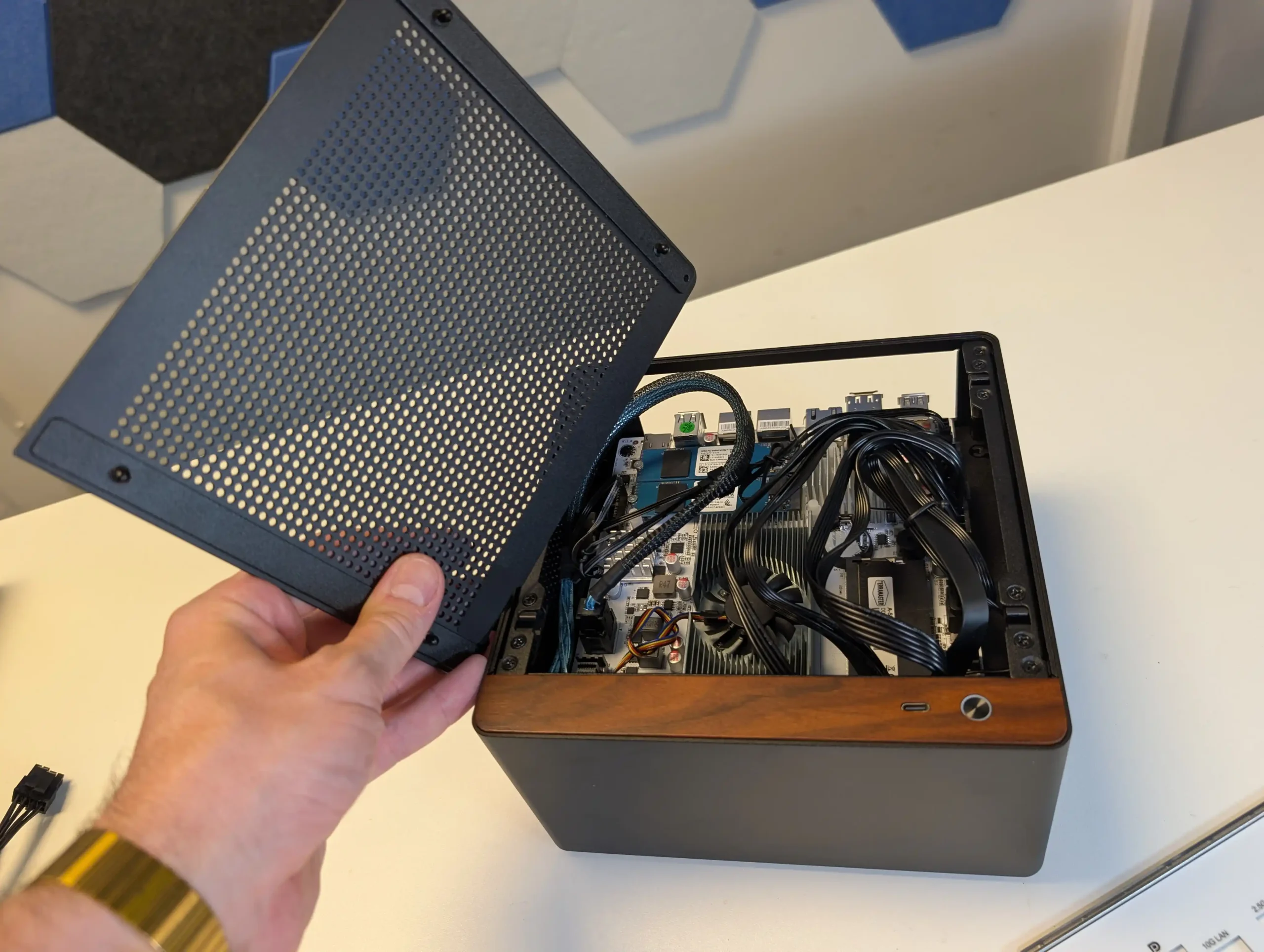
The power supply format supported is strictly FLEX 1U, with units up to 150mm in length permitted. This rear-mounted PSU bracket is placed above the motherboard tray and next to the SSD cage, and the power supply’s fan helps assist with rear airflow in conjunction with the two pre-installed 40mm exhaust fans.

While FLEX PSUs are well-suited to compact enclosures, they can be noisy under load and tend to cost more than SFX or ATX equivalents—especially if aiming for 80+ Gold or higher efficiency ratings. The internal wiring must be routed carefully due to spatial limitations, and although the case does include a Molex-to-SATA power adapter, it does not include any SATA data cables, which users must supply themselves. PSU airflow is indirectly beneficial to nearby components, but cooling requirements should be factored into PSU selection to avoid thermal bottlenecks.

The N10’s primary storage capability comes from its four internal 2.5-inch drive bays. Positioned in a fixed steel cage, the bays are arranged horizontally and mounted via screws without any vibration dampening or tool-less features. As noted earlier, there is no backplane, so each drive requires a dedicated SATA data and power cable, which must be routed manually through tight internal spaces.
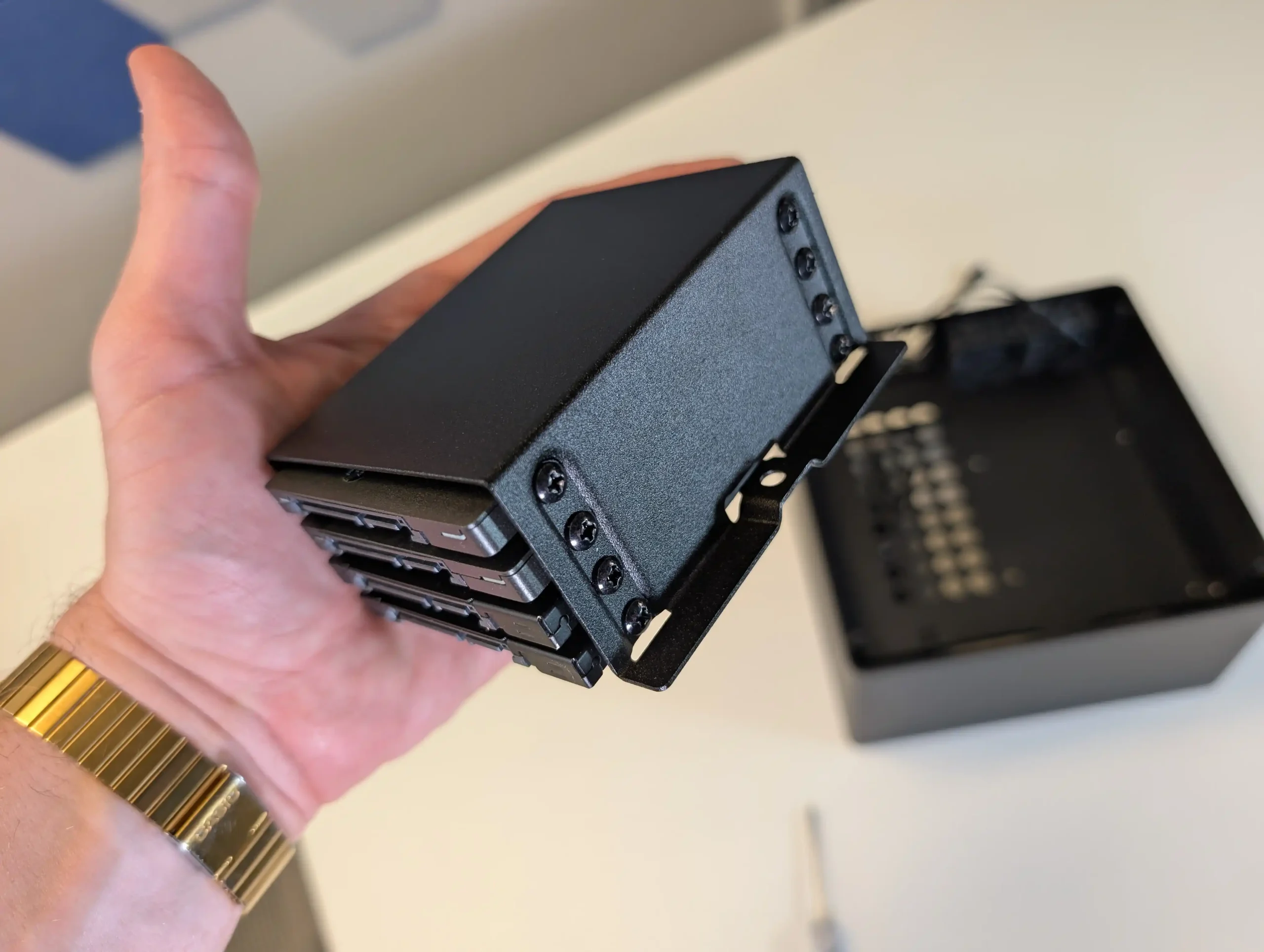
While the design clearly targets SSD usage due to thermal and vibration limitations, there is potential for 2.5-inch HDDs as well—though builders should be cautious of heat and noise. Some modders may consider fitting up to two 3.5-inch drives with minor modifications, but this would require bypassing manufacturer recommendations and limits compatibility to 8TB drives or smaller due to physical height constraints.
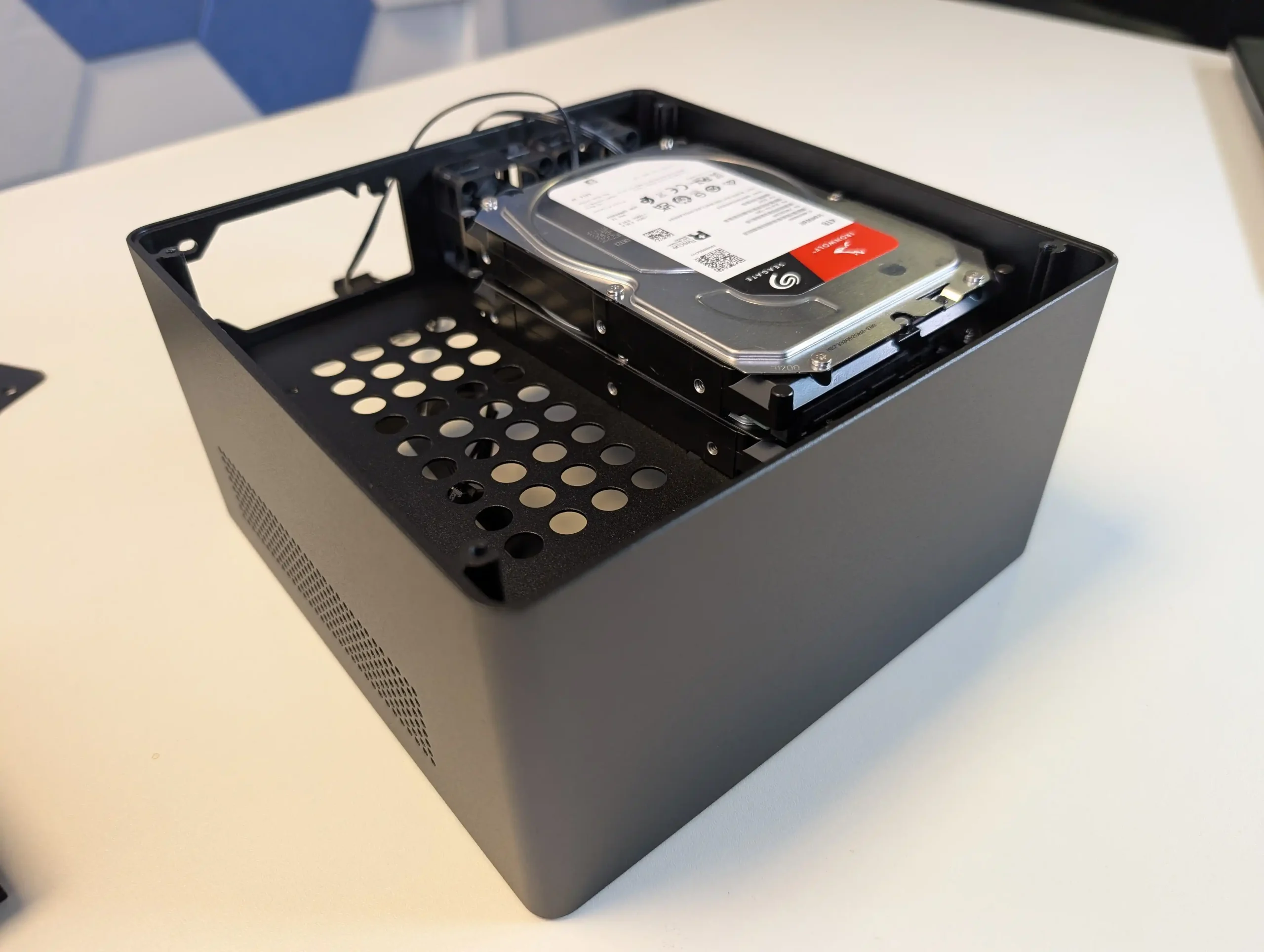
When paired with modern MITX boards featuring multiple onboard M.2 slots, the N10 can accommodate hybrid storage setups—though again, thermal planning remains crucial.
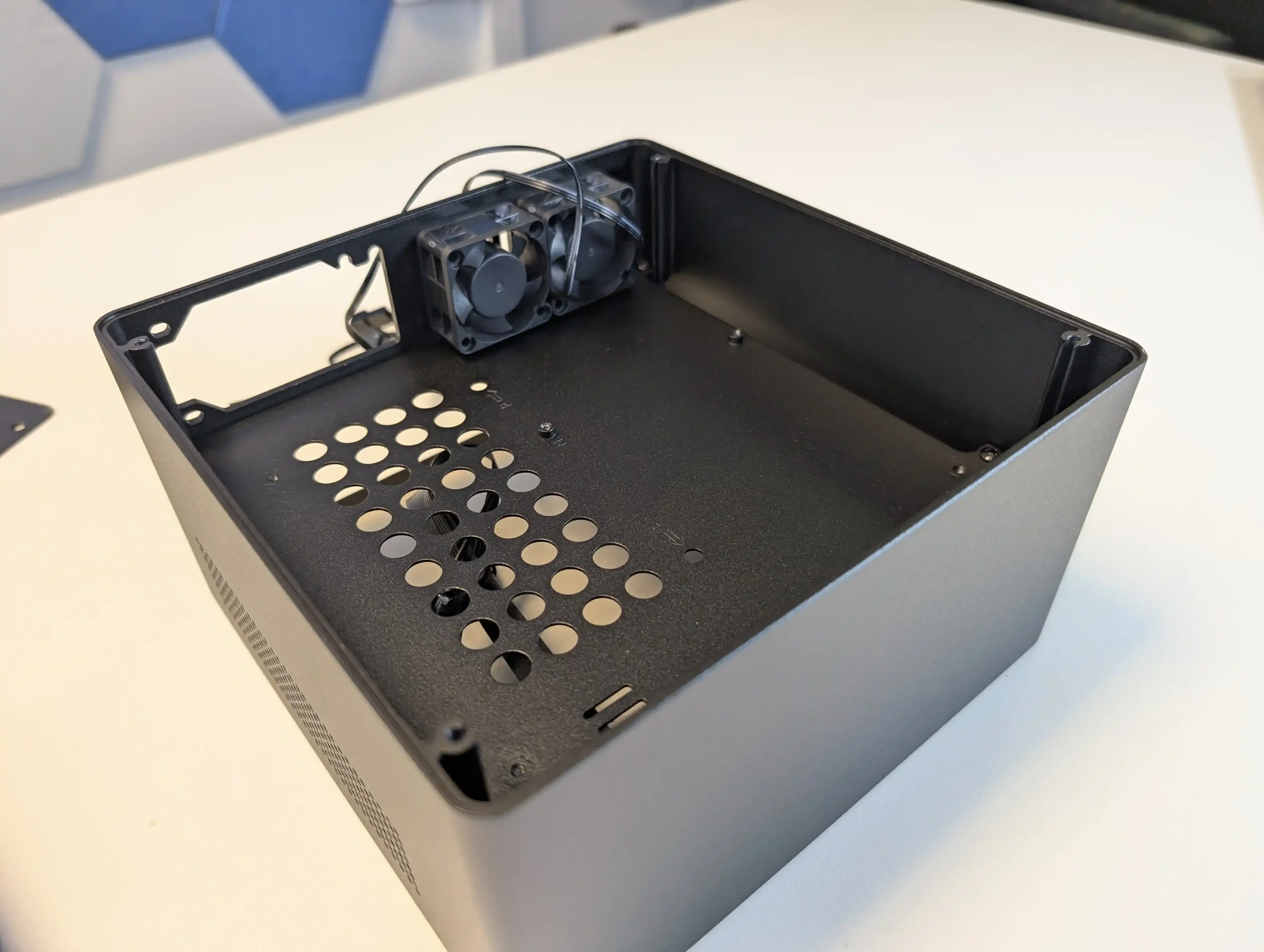
| Feature | Specification |
|---|---|
| Front I/O | 1 x USB Type-C |
| Rear I/O | Depends on motherboard used |
| Power Supply | 1U FLEX PSU (≤150mm length), rear-mounted |
| PSU Fan | Passive exhaust assistance (varies by PSU model) |
| Drive Bays | 4 x 2.5-inch SSD/HDD, screw-mount only |
| Included Accessories | Molex-to-SATA power adapter, hex key, spare rubber feet |
| Drive Mounting Method | No hot-swap or backplane; individual SATA cables required |
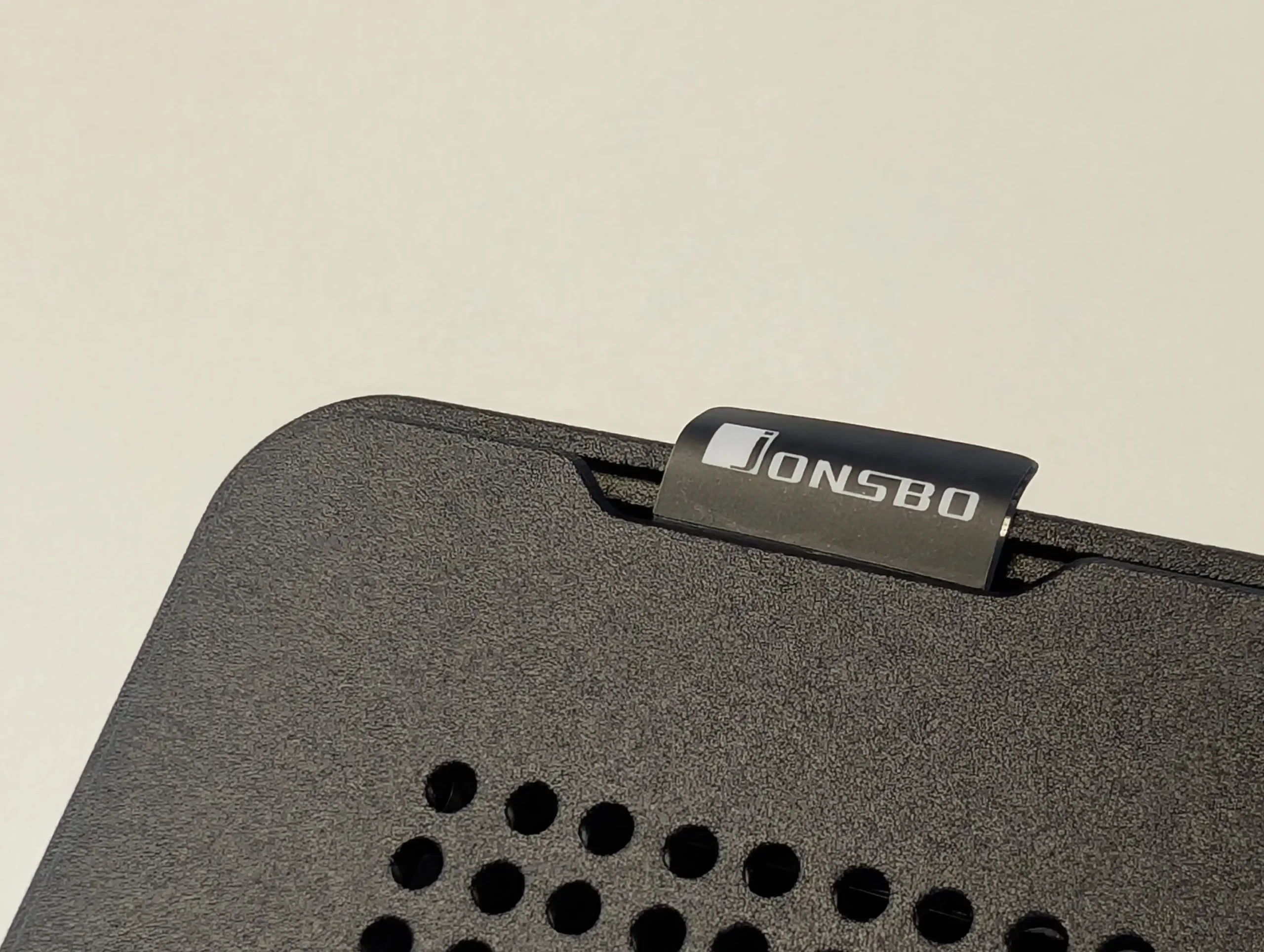
Jonsbo N10 NAS Enclosure Review – Conclusion and Verdict
The Jonsbo N10 delivers on its objective: to offer a compact, purpose-built NAS enclosure for Mini-ITX systems focused on SSD-based storage. It embraces the growing trend of low-power, embedded CPU platforms and caters directly to users building quiet, energy-efficient NAS devices for tasks like media serving, remote backups, or personal cloud storage. Its clean exterior design, robust aluminum-steel construction, and compact footprint make it appealing for constrained environments or unobtrusive desktop deployment. The inclusion of pre-installed fans, a Type-C front I/O, and even minor accessories like a Molex-to-SATA adapter add value to the out-of-box experience. However, its internal layout requires deliberate component choice and build planning due to significant space limitations and tight thermal margins.
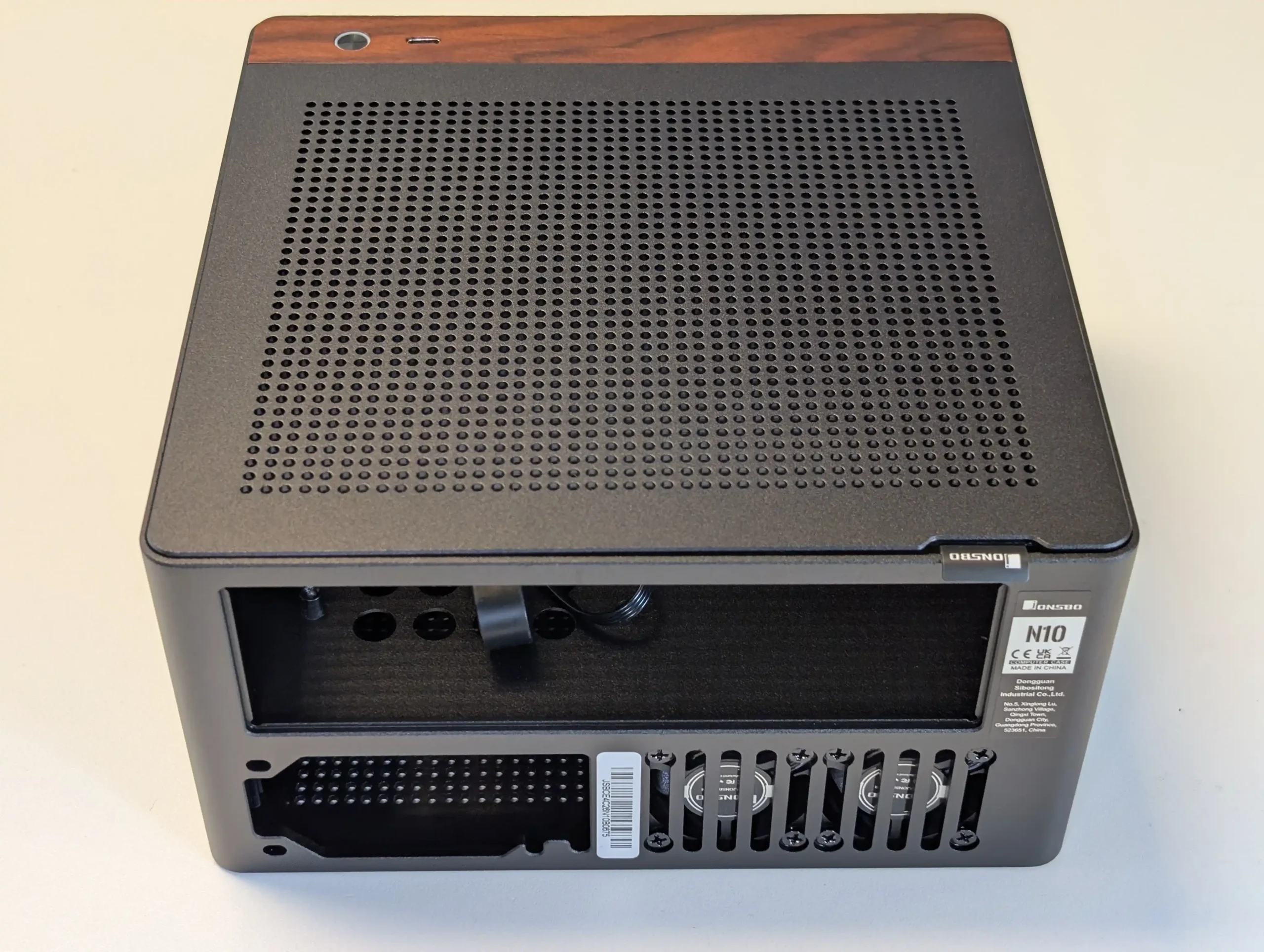
While not designed for broad flexibility, the N10 excels in its niche. There is no support for PCIe add-ons or active top-panel cooling, and the absence of hot-swap bays or bundled SATA data cables may frustrate some users expecting turnkey solutions. That said, for those familiar with small form factor NAS building, these limitations are expected trade-offs for a case that prioritizes minimalism and focused utility. As pre-built NAS units continue to integrate soldered CPUs and non-upgradable memory, enclosures like the N10 offer a rare chance for builders to retain full control over their hardware stack—provided they’re willing to work within the tight confines of the design. In short, the N10 is not for everyone, but for those building compact SSD-focused NAS systems, it strikes a well-executed balance between form, function, and footprint.

| Where to Buy? |
| Pros | Cons |
|---|---|
| Compact and space-efficient footprint (205 × 205 × 108 mm) | No support for PCIe add-in cards due to internal clearance |
| High-quality construction with 3.3mm aluminum and steel frame | Lacks SATA backplane; requires individual data/power cabling |
| Supports up to 4 x 2.5″ SSDs or HDDs | Limited cooling upgrade options (no top/supplementary fan mounts) |
| Includes 2 x 40mm built-in exhaust fans | FLEX PSU format may be expensive and noisy depending on model |
| Magnetic removable top panel for easier internal access | |
| Front I/O includes USB Type-C | |
| Includes Molex-to-SATA adapter and spare accessories in box | |
| Ideal for embedded ITX boards with passive/low-profile cooling designs |
Read the Jonsbo NAS Series Comparison Article on NASCompares Below (click below):
📧 SUBSCRIBE TO OUR NEWSLETTER 🔔🔒 Join Inner Circle
Get an alert every time something gets added to this specific article!
This description contains links to Amazon. These links will take you to some of the products mentioned in today's content. As an Amazon Associate, I earn from qualifying purchases. Visit the NASCompares Deal Finder to find the best place to buy this device in your region, based on Service, Support and Reputation - Just Search for your NAS Drive in the Box Below
Need Advice on Data Storage from an Expert?
Finally, for free advice about your setup, just leave a message in the comments below here at NASCompares.com and we will get back to you. Need Help?
Where possible (and where appropriate) please provide as much information about your requirements, as then I can arrange the best answer and solution to your needs. Do not worry about your e-mail address being required, it will NOT be used in a mailing list and will NOT be used in any way other than to respond to your enquiry.
Need Help?
Where possible (and where appropriate) please provide as much information about your requirements, as then I can arrange the best answer and solution to your needs. Do not worry about your e-mail address being required, it will NOT be used in a mailing list and will NOT be used in any way other than to respond to your enquiry.

|
 |
Minisforum N5 NAS, 6 Months Later - Better, Worse, the Same?
Beelink ME Pro NAS Revealed
Best SOLID STORAGE NAS of 2025
Should You Worry About the NanoKVM Hidden Microphone?
Best Cheap NAS of 2025
Minisforum MS-02 Ultra - WHO IS THIS FOR??? (The First 48HRs)
Access content via Patreon or KO-FI





Discover more from NAS Compares
Subscribe to get the latest posts sent to your email.


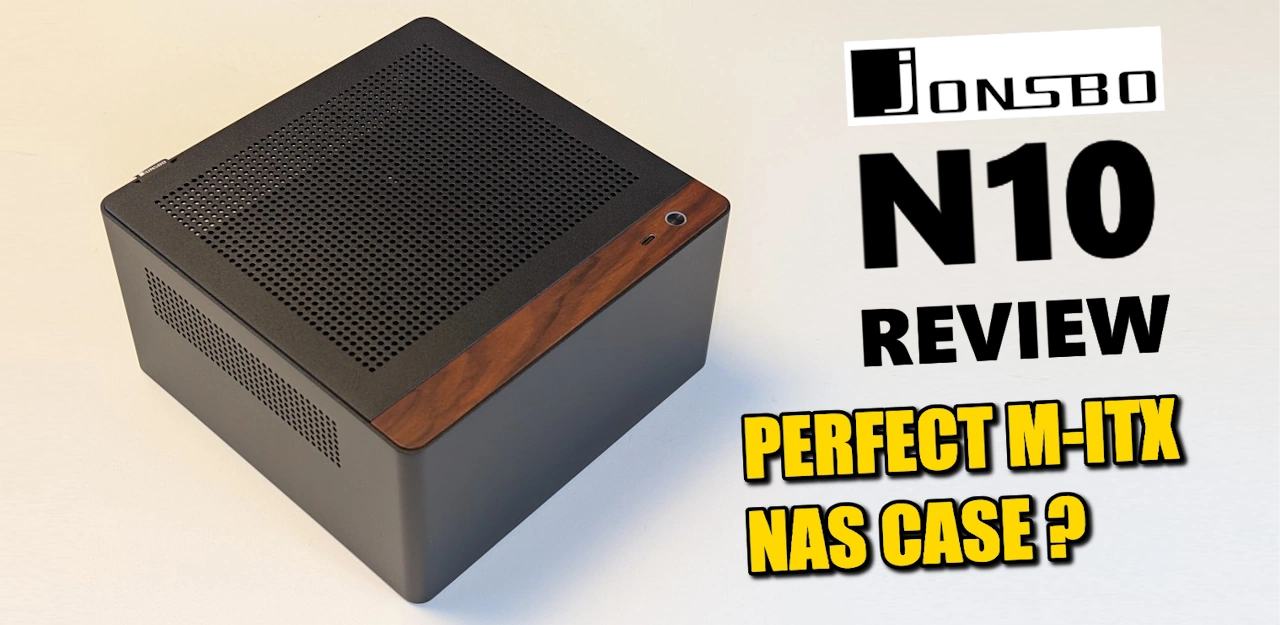
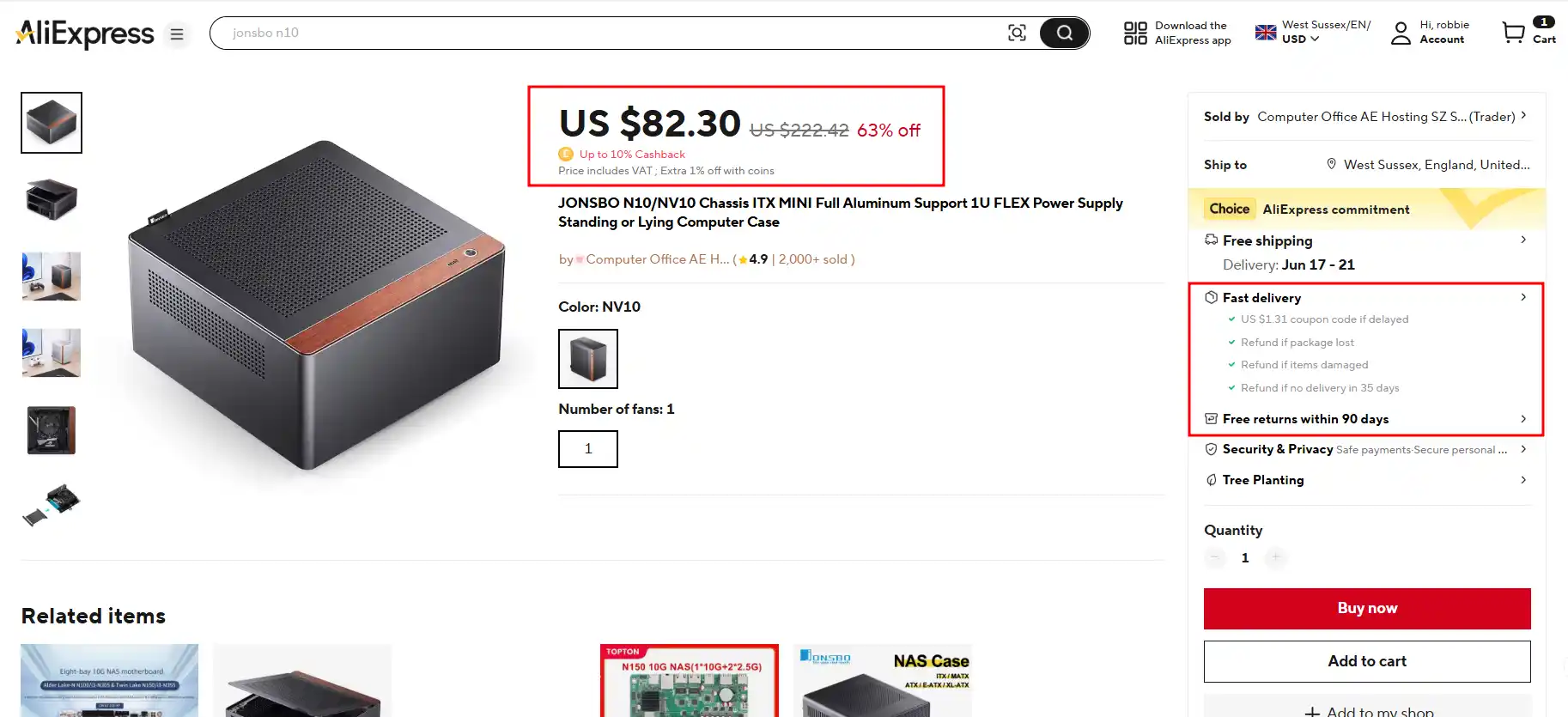
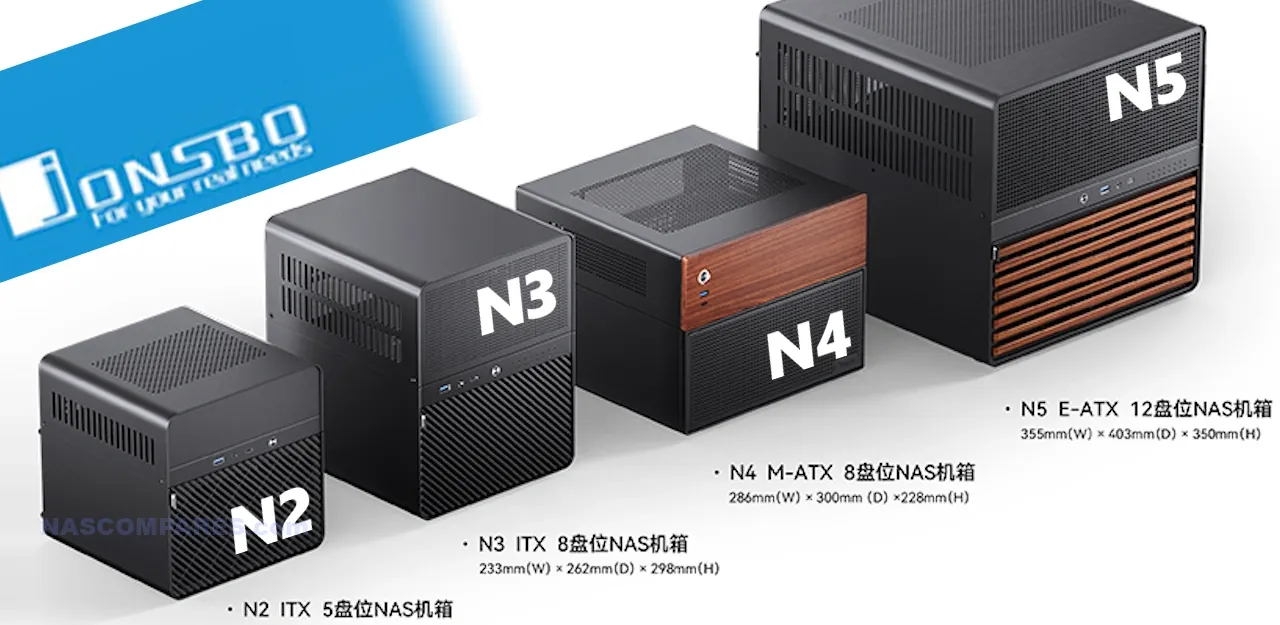



I just wish they made them a little taller, just to fit a SFX-PSU.
REPLY ON YOUTUBE
Wish list for the N6… Make it Micro-ATX (ala N4) but allow for full height PCIe cards, include a 120mm fan mount in the motherboard compartment at the side panel, and change the hard drive cages to allow for legit sleds instead of the rubber bands. (Or at least allow 3D printed sleds [and publish the reference .stl files on their site] if they’re too cheap to include their own)
REPLY ON YOUTUBE
A great case that reminds me of the heyday of the 1990s UNIX workstations like the Sun Microsystems SunSparc, Silicon Graphics Indy or Steve Job’s NeXT Cube! There should be more cases with these form factors!
REPLY ON YOUTUBE
Stop designing around liters and put more thought into utility and clearances. Jonsbo cases are annoying to work with because designers didn’t grasp that concept quite enough. Always some mms of clearance hassles that compromise cooling , routing, and so on. A proper drive pull handle if trays are not on the cards seems like a low effort design win that would address the most common feedback. Refinement over covering every niche use case.
REPLY ON YOUTUBE
Any USB4 mini pcs?
REPLY ON YOUTUBE
can someone tell them to update cases to have also front side fan mounts
REPLY ON YOUTUBE
I’d really like to see a compact NAS using U3 drives.
REPLY ON YOUTUBE
they should make a tk-1.5
REPLY ON YOUTUBE
What’s the height of the 2.5 NVMe drives in the non-gpu-version, if one was planning to use U.2/U.3 drives?
REPLY ON YOUTUBE
Jonsbo always creating cases for minimalist setups, i love them
REPLY ON YOUTUBE
it’s confusing. does it fit full size graphics card or it is for low profile graphics card
REPLY ON YOUTUBE
Oooo i like this! It seems the NV10 would vent gpu heat out the bottom? N10 for meeee!
REPLY ON YOUTUBE
I am an instant buy for one of these
REPLY ON YOUTUBE
And for those of us that have completely given up on SATA drives; how many M.2 sticks can I practically get in there with the right AMD mobo, bifurcators, minimum required fans and whatnot?
REPLY ON YOUTUBE
I am looking forward to a build using the N10 case and a CWWK MOBO. I would also like to see you use the HexOS on it. Thanks!
REPLY ON YOUTUBE
I wouldn’t call these being “revealed” when these have been on Jonsbo’s website for over half a year now and there have even been builds with these cases shown in r/sffpc
REPLY ON YOUTUBE
Please, review the N10 case
REPLY ON YOUTUBE
I’m ready to get one of the all flash NAS servers, but as Rob keeps identifying, the cooling is the thing. This is a step in the right direction, but I’d still like an Aoostar-type all-flash mini-pc with adequate cooling. If I were staying in the SATA space going forward I’d be looking at the N10.
REPLY ON YOUTUBE
If Jonsbo would give us decent drive sleds they’d be perfect.
REPLY ON YOUTUBE